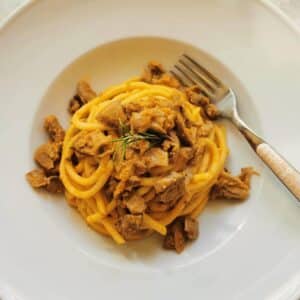Enjoy this authentic Venetian duck ragu recipe from my home in Veneto. This is a duck ragu brimming with rich flavors that pairs wonderfully with different types of pasta. It’s an excellent dish for batch cooking for family gatherings and special occasions.
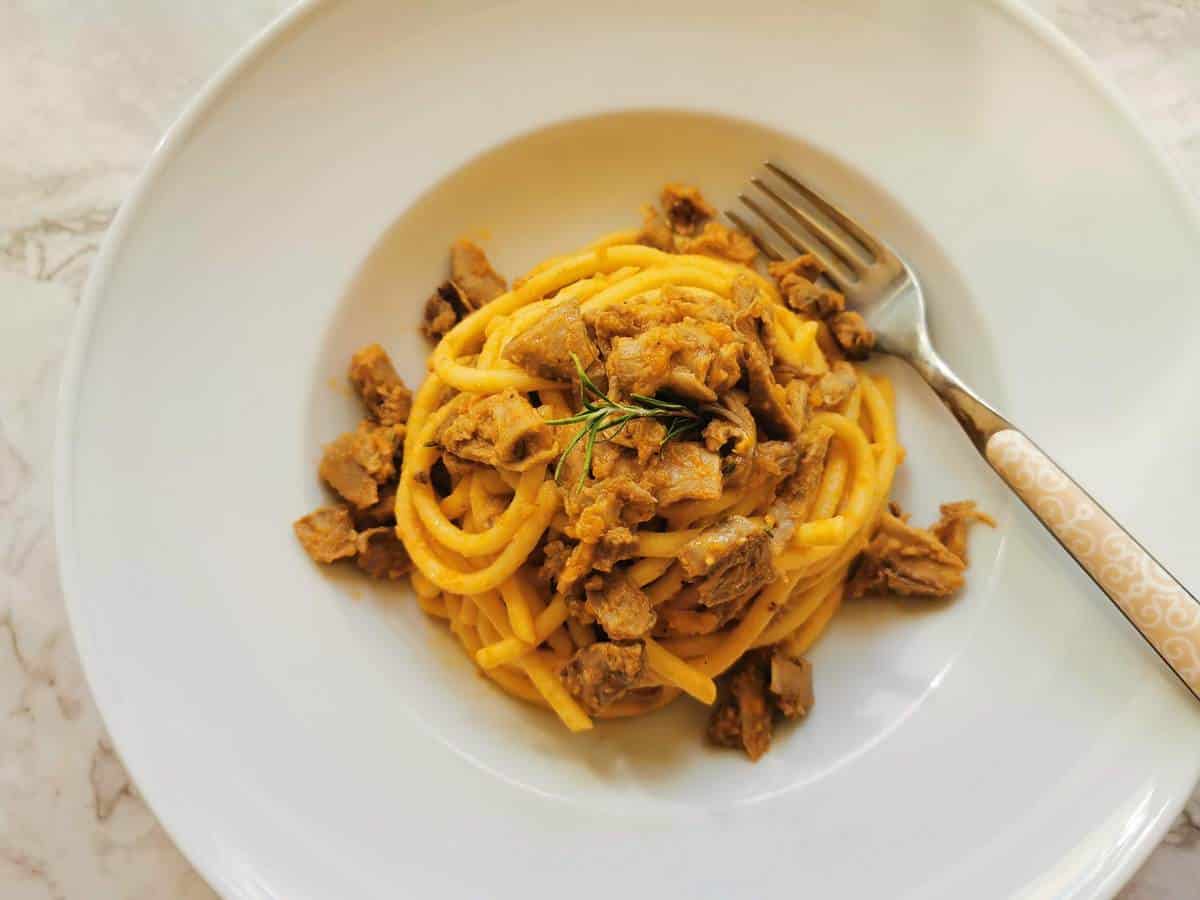
History
Duck ragu with bigoli is a traditional dish here in Veneto where I live. If you visit the region you are bound to find it in many restaurants. It is also often cooked by the Venetians on holidays or feast days.
Bigoli looks like a very thick spaghetti and is often eaten with various fat-rich sauces; the most well-known bigoli recipe is with duck ragu. In the past, the traditional recipe for this dish involved cooking the pasta in a fatty broth in which a young duck had been boiled.
The Venetians then made a sauce with flavored butter and the offal of the duck, which they ate with the bigoli. The duck itself was eaten after.
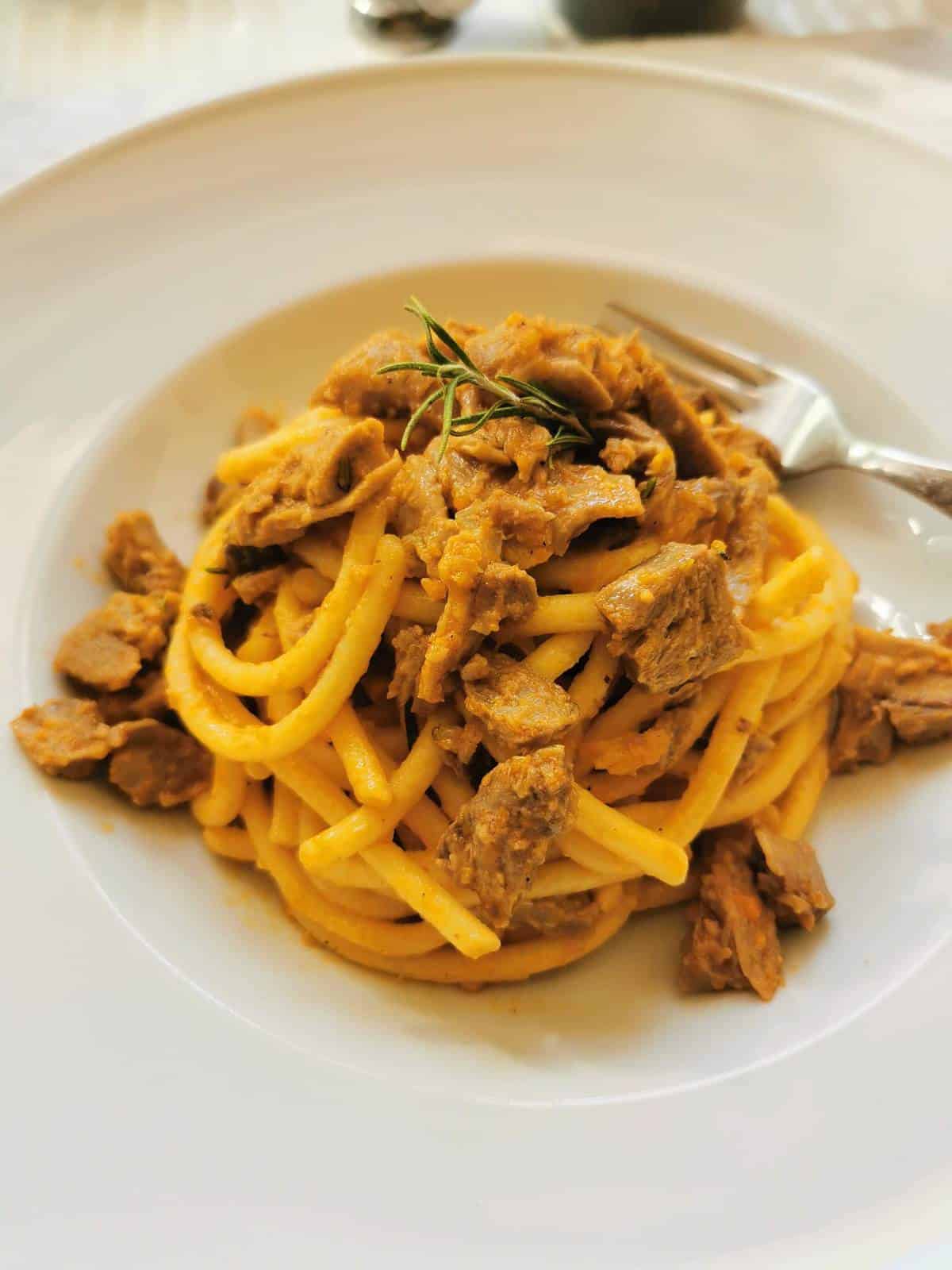
A bigoli with duck ragu festival!
This duck pasta dish used to be traditionally cooked in September and October during the hunting season. Even today, in the small town of Zane near Vicenza, a ‘bigoli with duck’ festival is held on the first Sunday of October.
At the feast, bigoli is first served with a duck meat sauce and then the duck is served separately. In keeping with tradition, they also cook the pasta in duck broth, rather than in water. I’ve never tried it this way but this makes the whole dish a lot tastier.
Nowadays many people use ground duck meat to make a sauce very similar to normal meat ragu, but usually without tomatoes. That recipe is, of course, extremely lean and healthier!
However, to be honest I feel it’s cheating a bit and doesn’t have the same flavor as other methods of making duck ragu.
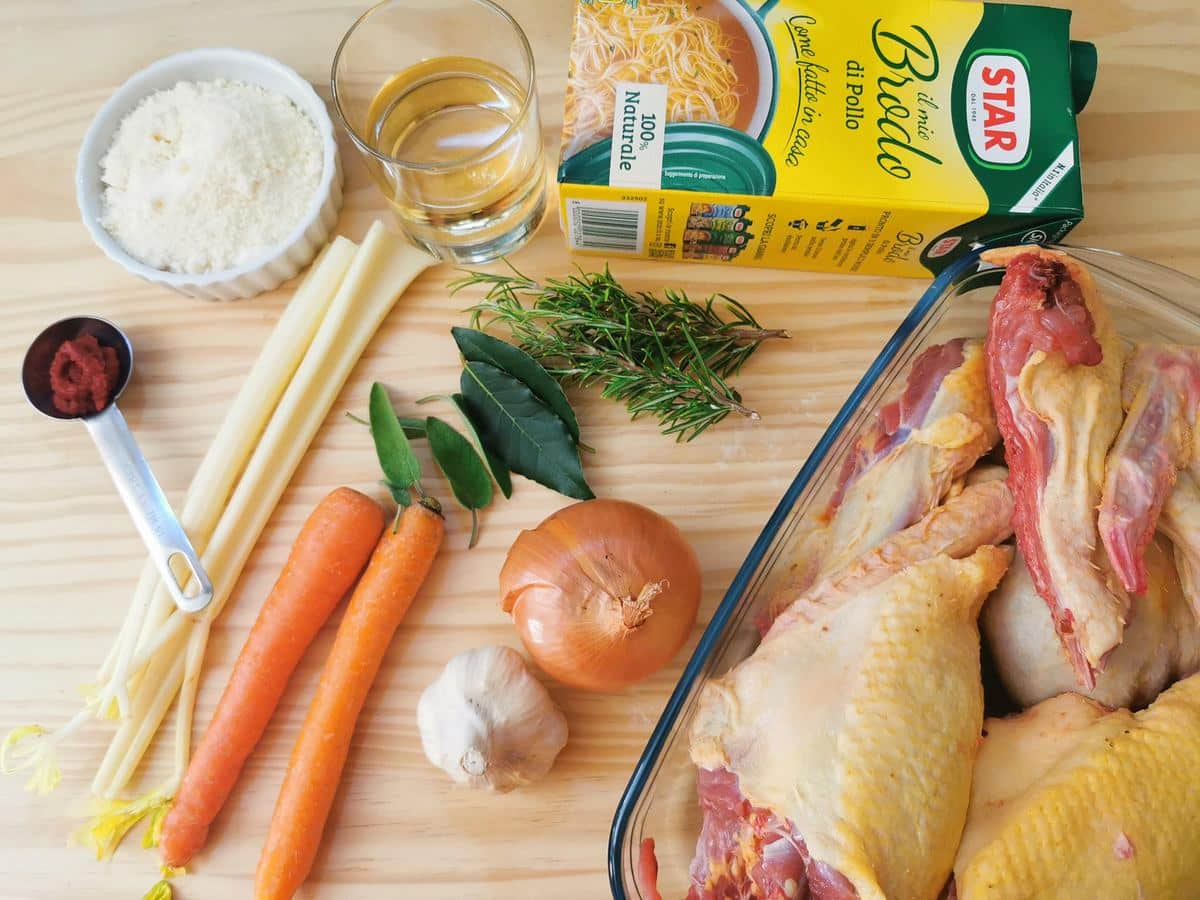
Ingredients
- Duck: I used two duck legs and two duck thighs. You can buy these separately pre-prepared or prep a whole duck, which is a little more work but will save you money. It’s also best to use the bone-in duck thighs as the duck bones will add a lot of richness to the ragu.
- Bigoli Pasta: Bigoli is a usually fresh pasta, mostly eaten in Veneto. It looks like very thick spaghetti and is about 3-4mm in diameter. If you can’t source bigoli, you can substitute it with spaghettoni or spaghetti.
- Extra Virgin Olive Oil: However, it doesn’t need to be very expensive or cold-pressed since the oil will be heated at a high temperature to sear the duck.
- Celery, Onion, Carrots, and Garlic: Collectively known as ‘soffrito’ in Italian cooking, these ingredients form the foundational flavor base. It’s important to chop these finely to help them seamlessly integrate into the sauce.
- White Wine: Use a dry white wine to better balance the richness of the duck. If you want to avoid using alcohol, you can omit it.
- Tomato Paste: Adds a rich tomato flavor to the sauce. Sometimes you will find tomato paste labeled as tomato concentrate, depending on the region.
- Chicken Broth: Feel free to use homemade, store-bought broth or quality chicken stock cubes.
- Fresh Herbs: Use fresh herbs over dried herbs. The fresh sage, rosemary, and bay leaf will help the duck ragu achieve its authentic and rich flavor.
- Parmigiano Reggiano: Once plated, you can top the duck pasta with some grated Parmigiano Reggiano or Grana Padano for an extra umami boost.
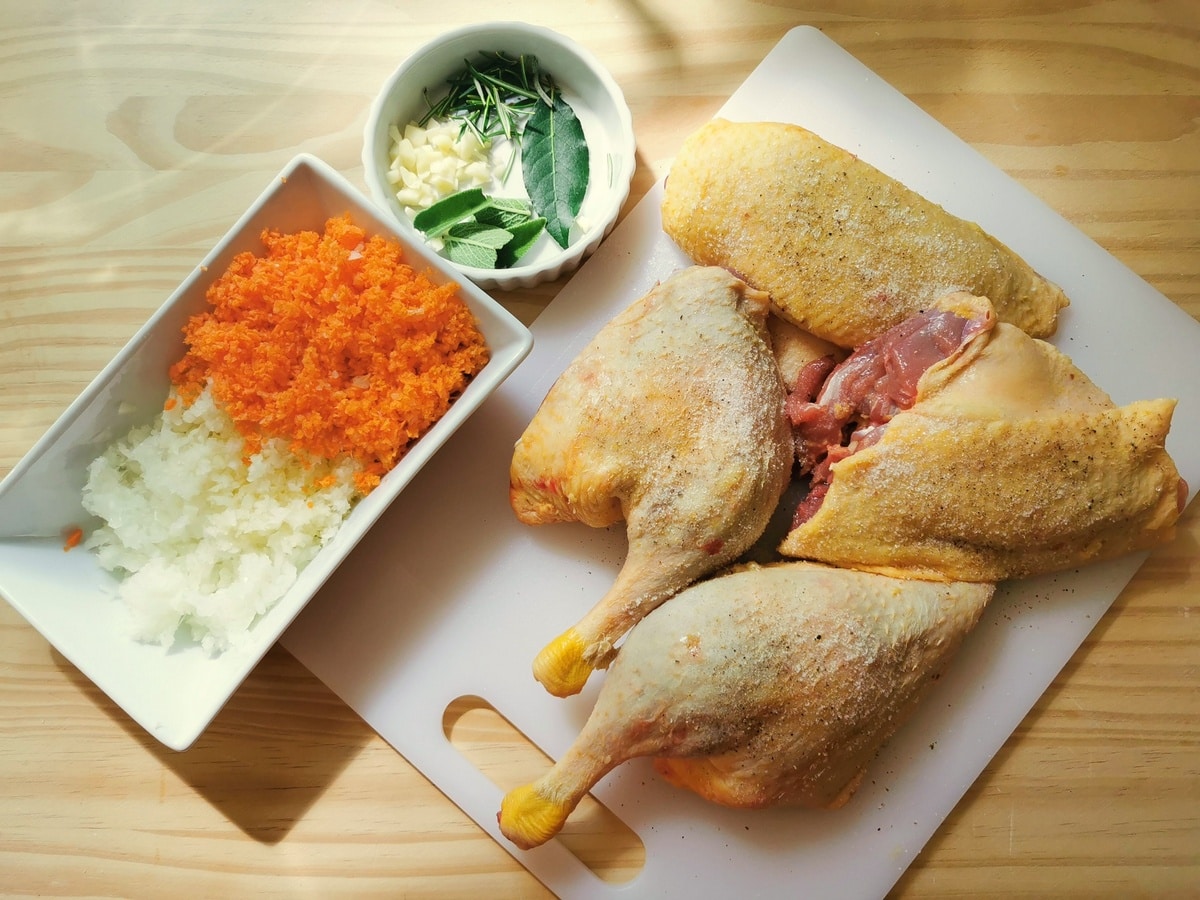
Expert Tips
Deglaze the Pan: If there are any brown bits after searing the duck, deglaze the pan after you add the wine. Scraping the bottom of the pan with a wooden or plastic spatula or spoon will lift these flavorful bits, integrating them into the sauce for an enhanced depth of flavor.
Achieving the perfect sauce consistency: Add more wine or broth if your sauce becomes overly thick during the slow cook. Then, if the sauce is too thick after you have added the pasta, mix in a little of the reserved pasta water. On the other hand, if it’s too thin, simmer until it reduces to your desired consistency.
Cooking Al Dente Pasta: Cooking pasta to that ideal ‘al dente’ is simple if you follow these steps.
1) First, bring a large pot of water to a boil. When it’s boiling, season the water well with salt and wait for it to return to a rolling boil.
2) Add your pasta and ensure to give it a good stir periodically. This stops the pasta from sticking together and ensures it cooks evenly.
3) Then, 1-2 minutes before the pasta package suggests it’s al dente time, start tasting the pasta in 45-60 second intervals until it’s ready.
Follow this method and you will have a foolproof way of having al dente pasta every time.
Step by Step Instructions
1) Heat oil in a sturdy pot or deep frying pan. Season duck with salt and pepper. Place them skin side down in the pot and sear until browned and crisp. Turn to brown on the other side.
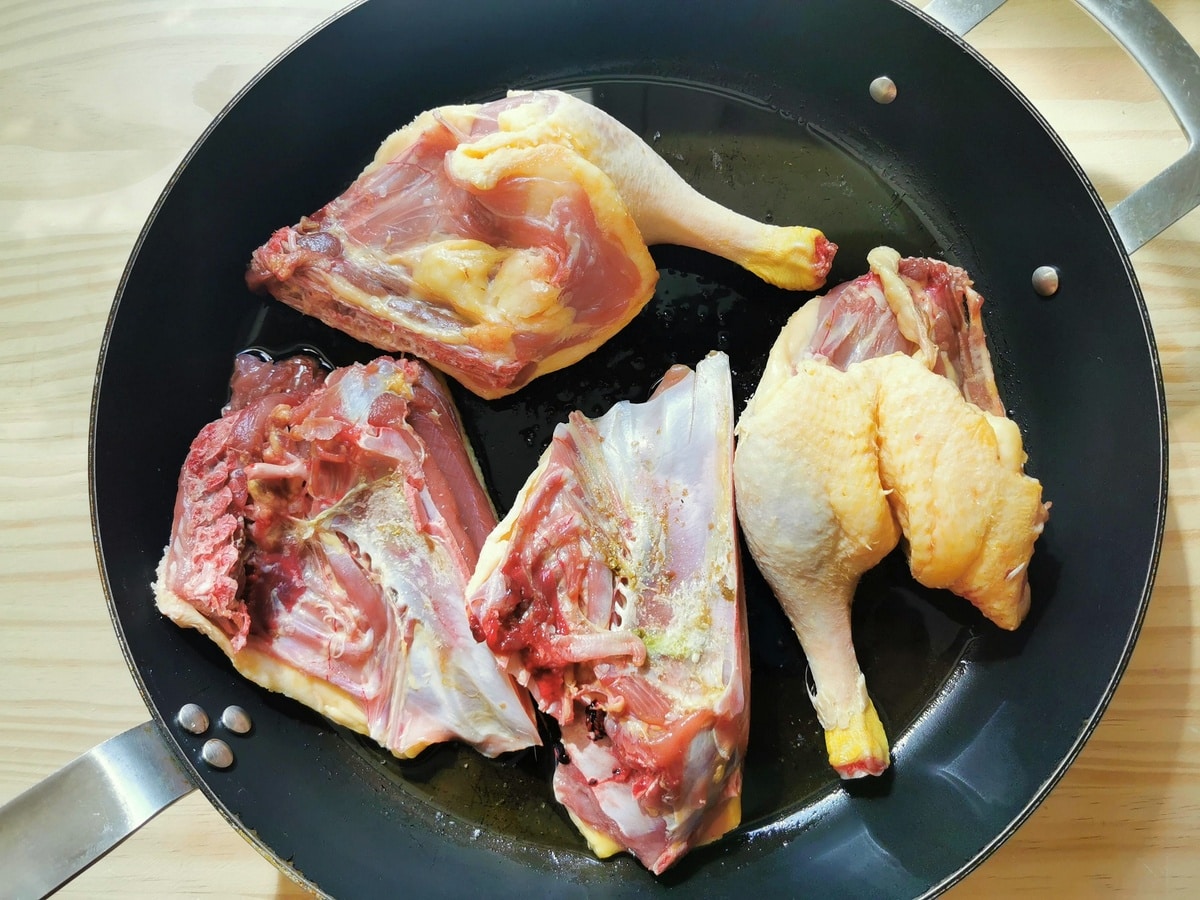
2) Transfer the duck to a deep pot or Dutch oven. Then drain all but about 1 tablespoon of the fat from the pan.
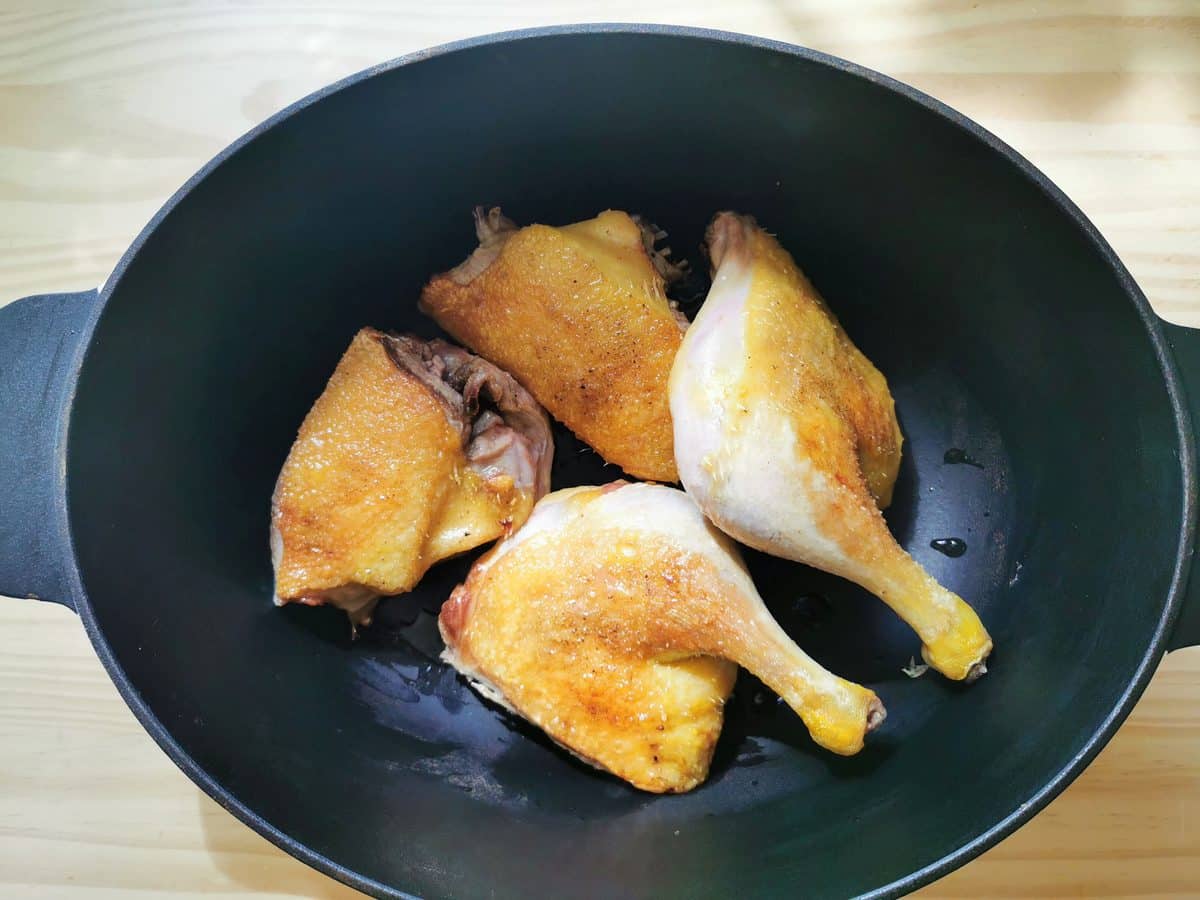
3) On medium-low heat, add celery, onion, and carrot to the pan. Stir occasionally until softened, which usually takes around 10 minutes. Mix in garlic and cook for an additional minute.
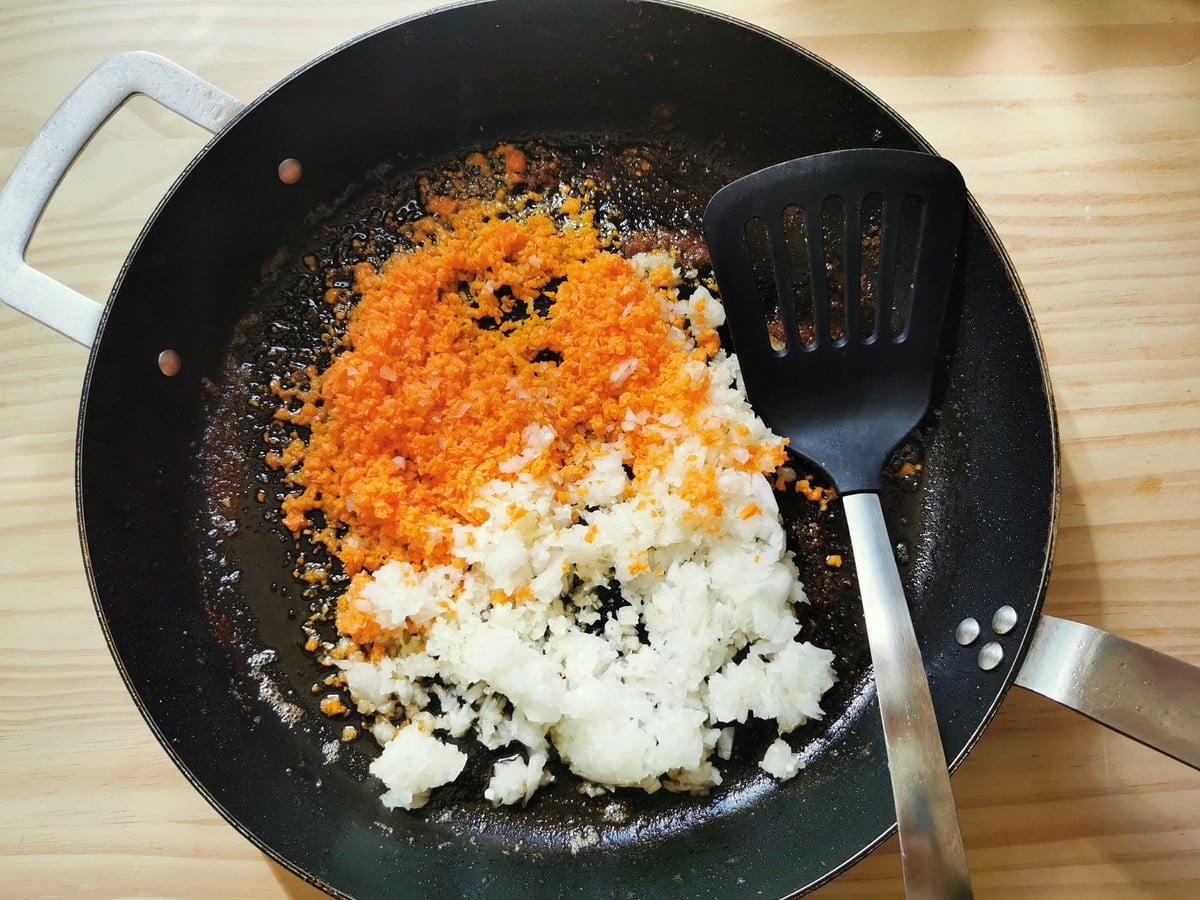
4) Pour in wine, set heat to high, and let it reduce by half.
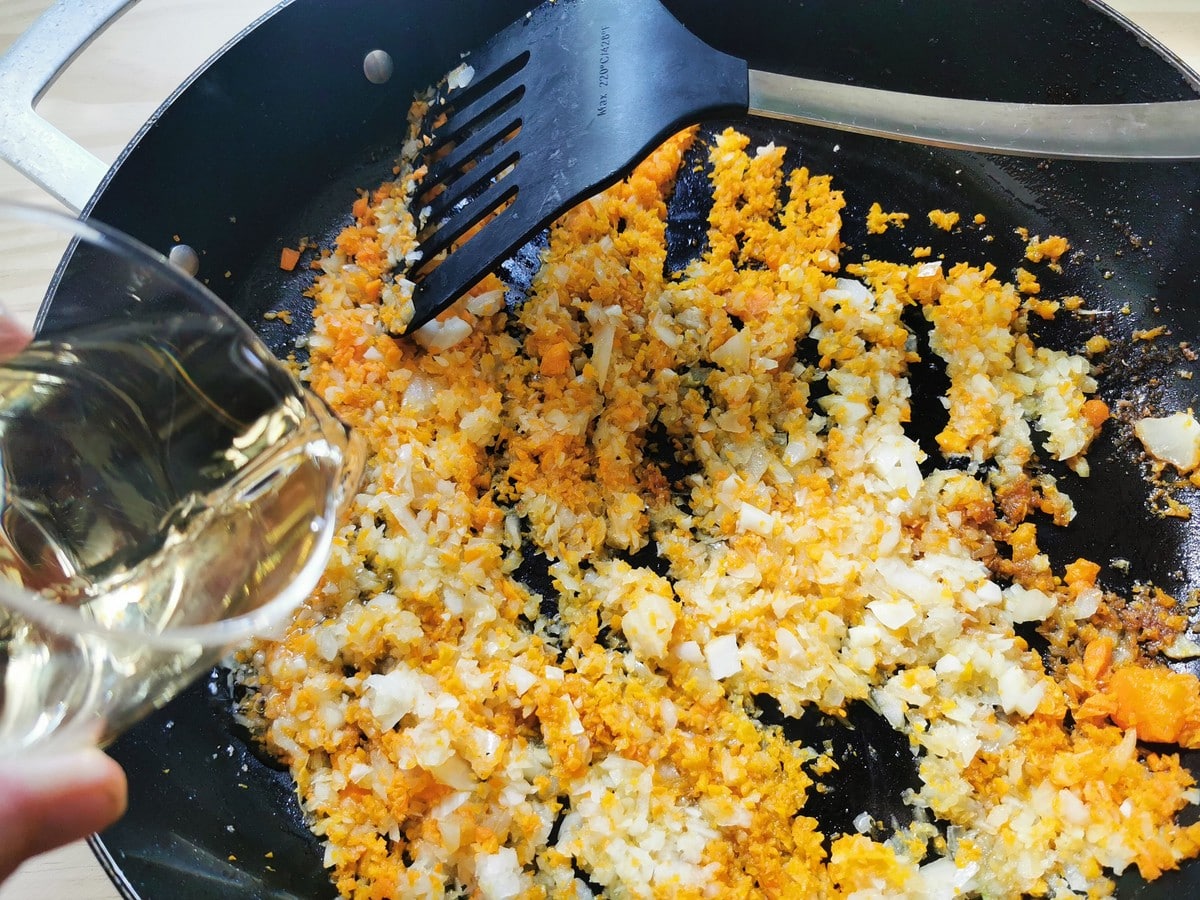
5) Add broth, tomato paste, sage, rosemary, and bay leaf. Mix well and bring the sauce to a boil.
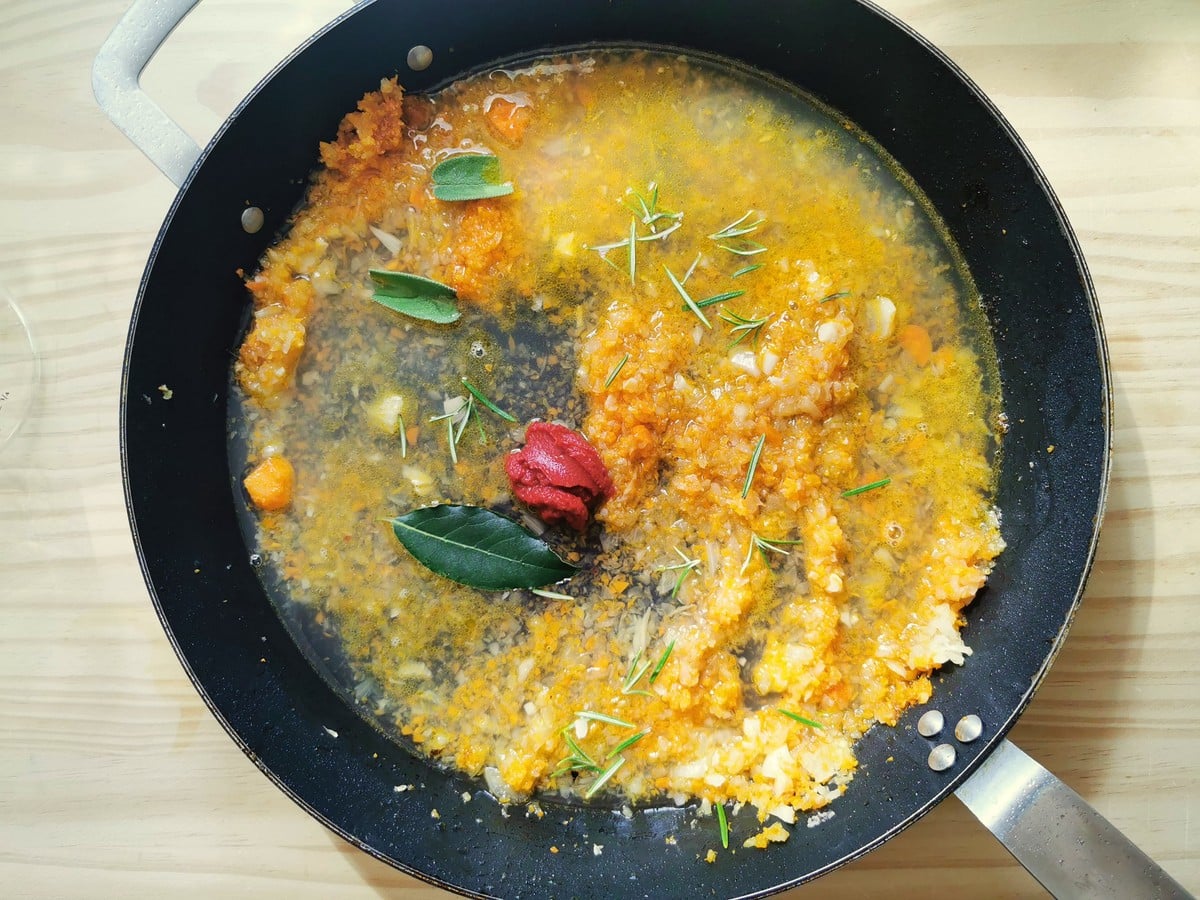
6) Pour the sauce into the pot with the duck. Cover and let simmer until meat is tender, around 1.5 to 2 hours.
Note: If sauce thickens too much, add wine or broth as needed.
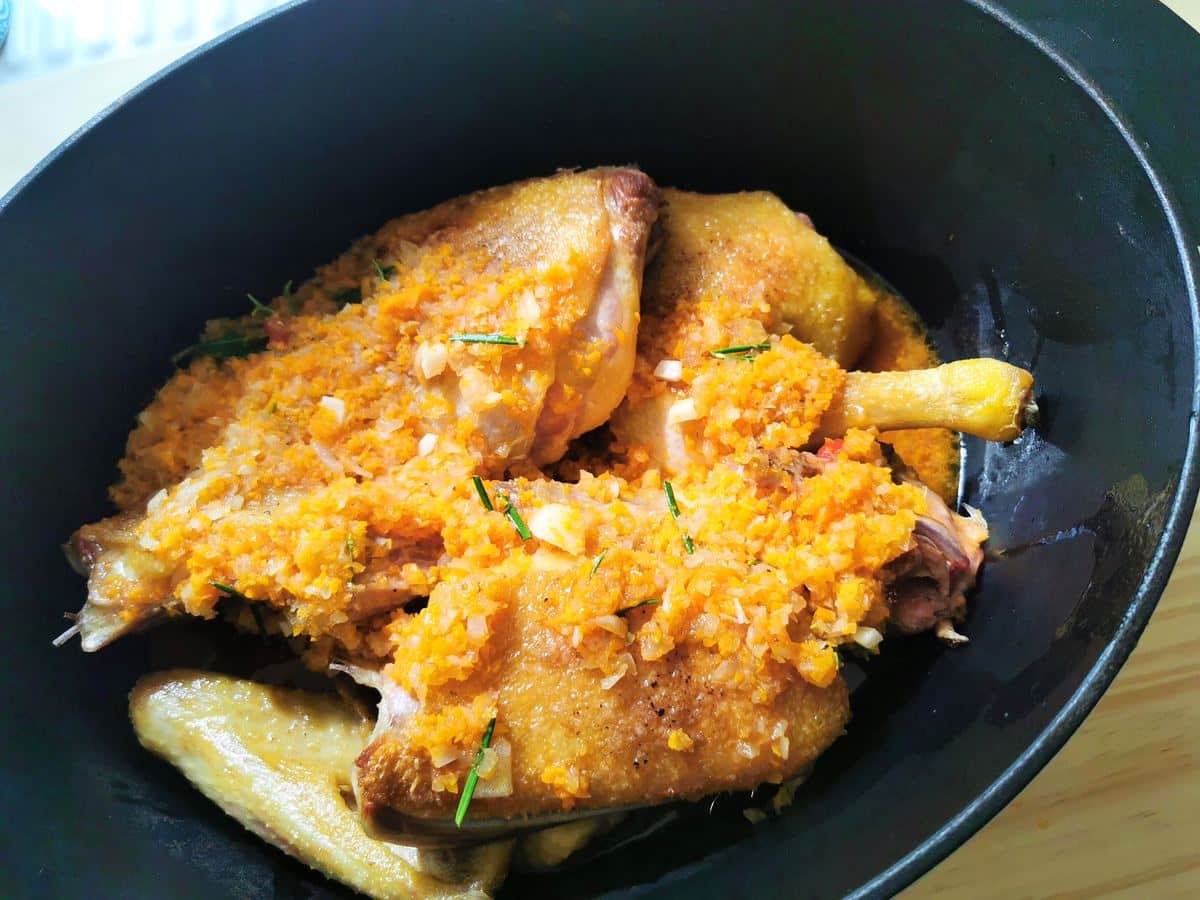
7) Once done, remove the duck and set it aside. Skim off excess fat from the sauce. If the sauce is too thin, simmer it until it reaches your desired consistency.
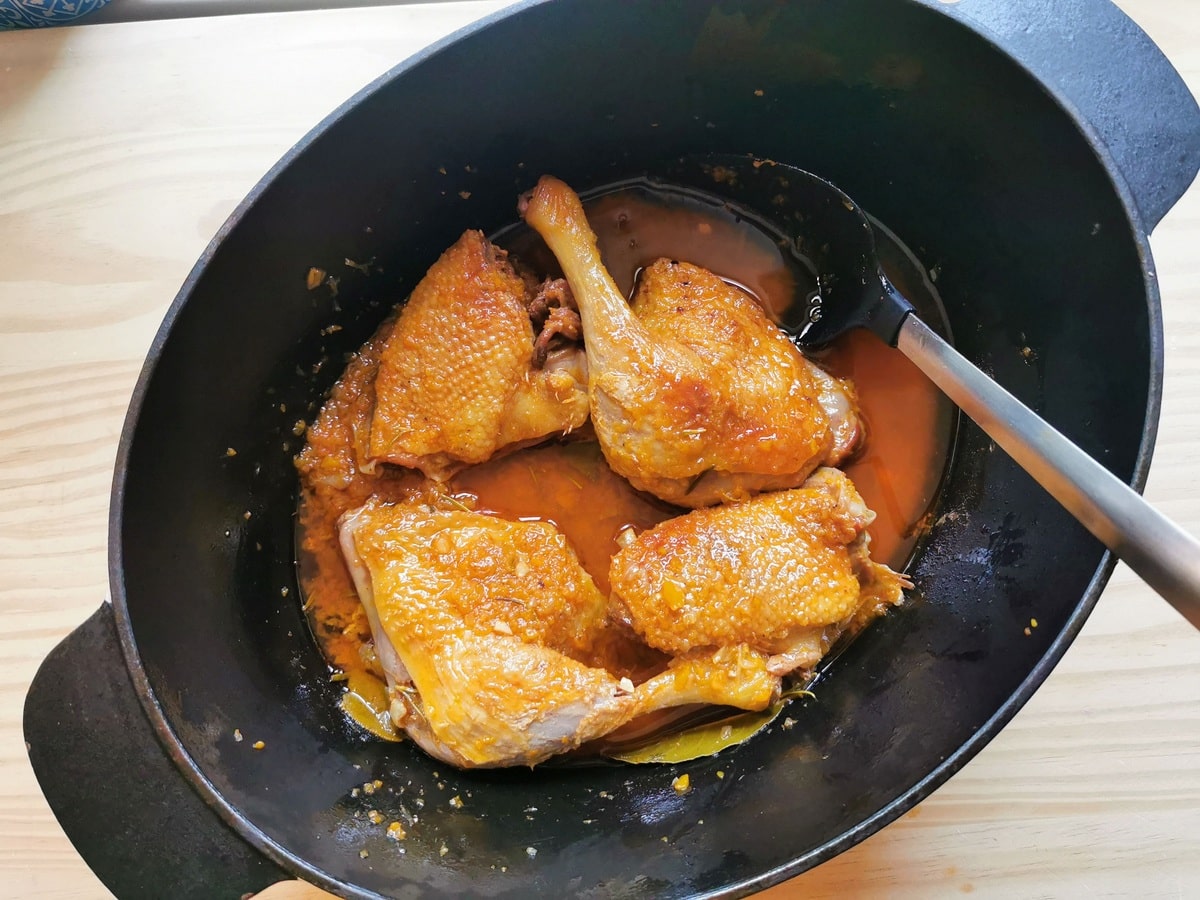
8) When the duck has cooled enough to be shredded, discard its skin. Detach meat from bones and shred or cut it into small pieces.
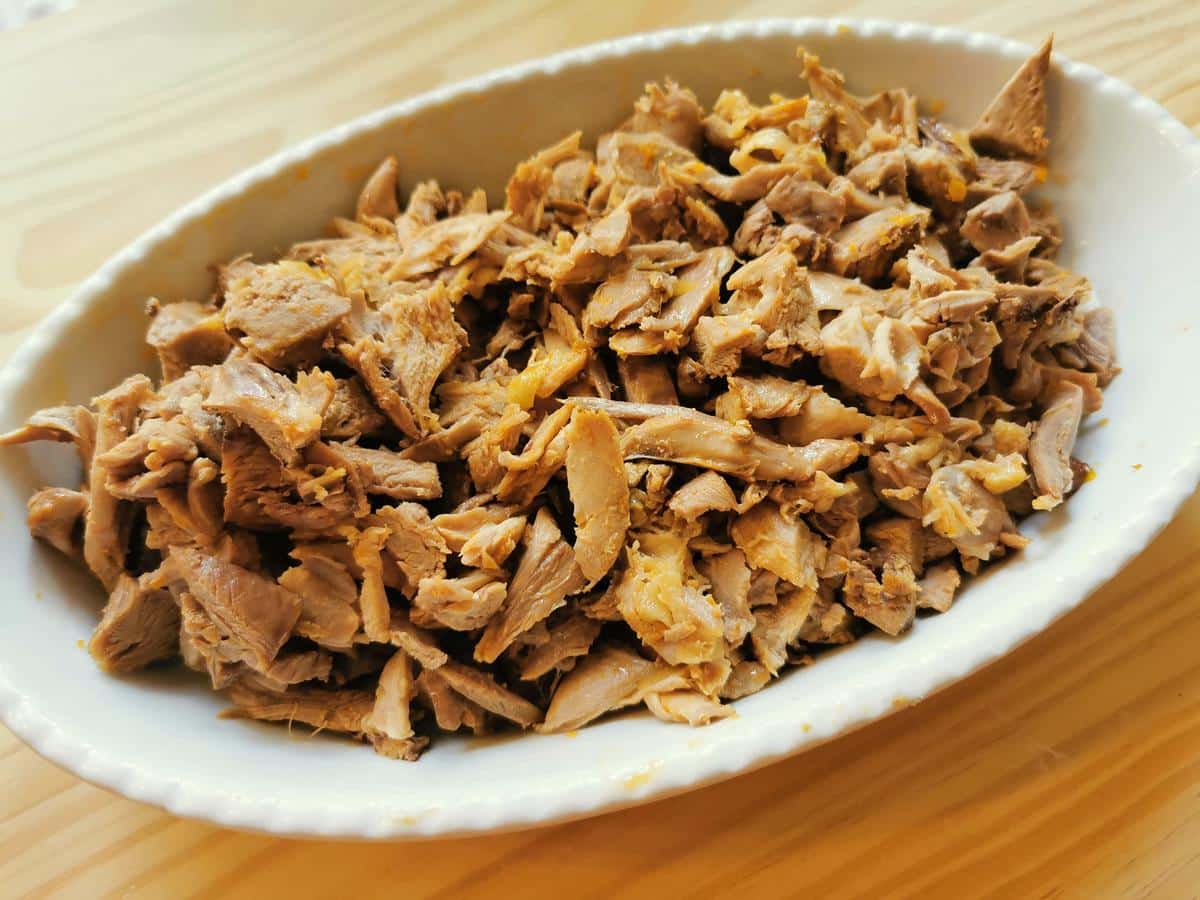
9) Add the meat back to the sauce and let it simmer for 10 minutes. Remove the bay leaf. Season with salt and pepper as needed.
10) For serving, boil a pot of water. Add salt then the pasta and cook until al dente as per package instructions (or 6-8 minutes if homemade bigoli). Before draining, set aside a cup of pasta water.
11) Toss the cooked pasta with the duck ragù. If needed, add some pasta water to adjust consistency.
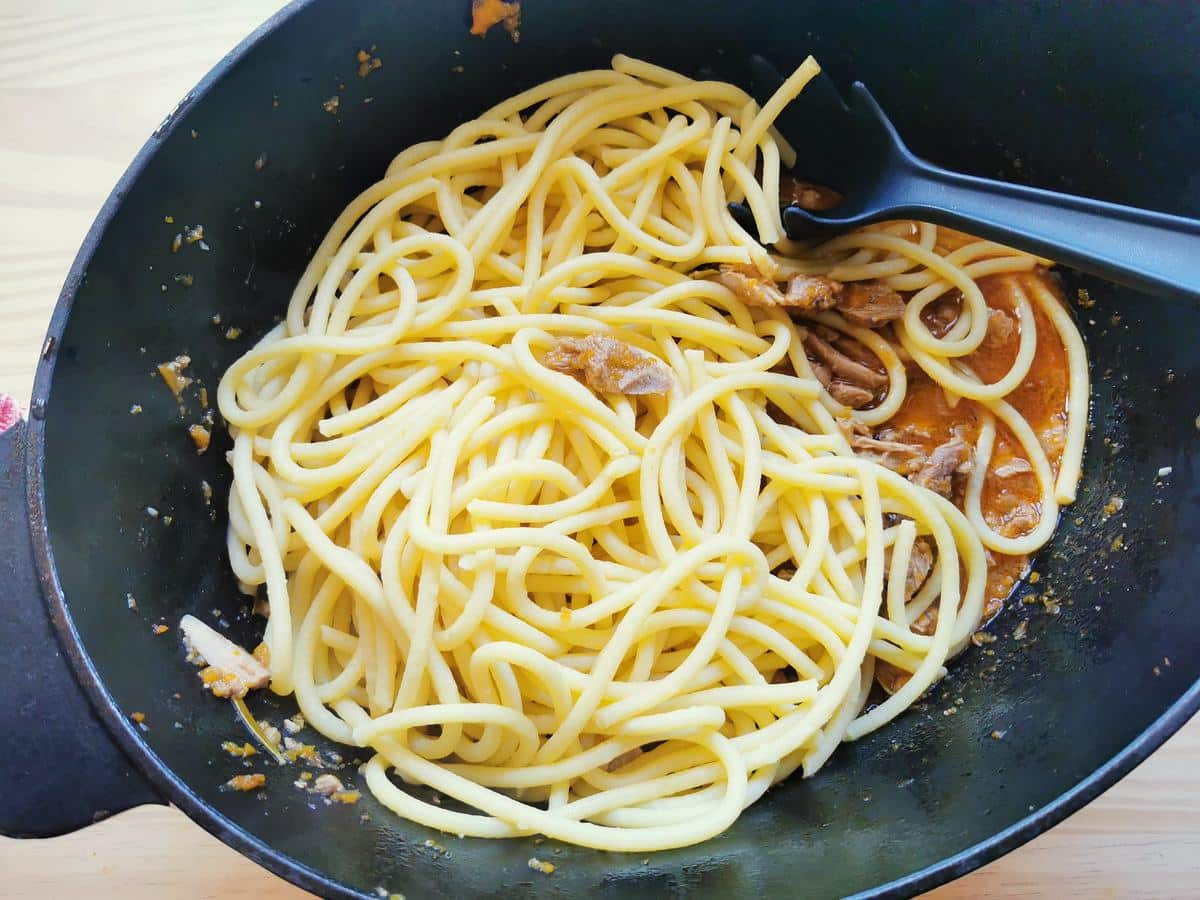
12) Serve with additional duck ragù on top, garnished with Parmigiano Reggiano.
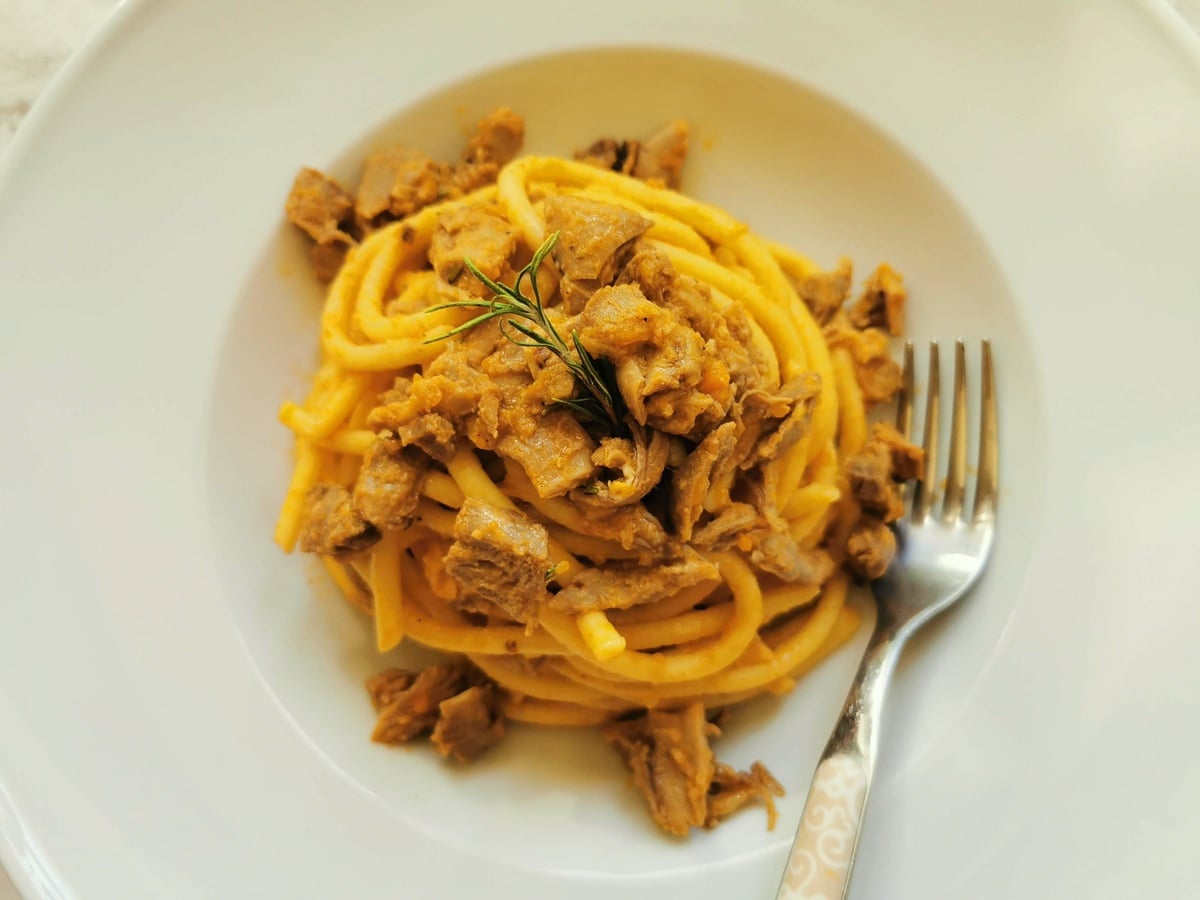
Storage and Leftovers
To store: Allow the duck ragu and pasta to cool, then transfer it into an airtight container. It will stay good quality in the refrigerator for up to 3 days. You can also store the duck ragu separately for up to 3 days in the refrigerator or the freezer for 3 months.
To reheat: Place the duck ragu pasta into a microwave-safe dish, cover with a lid or plastic wrap, and reheat until hot throughout.
FAQs
Absolutely! Duck ragù’s flavor even deepens when made a day in advance. Store it in the fridge in an airtight container and reheat gently on the stovetop, stirring occasionally, before serving with freshly made pasta. This method is perfect for busy hosts planning dinner parties or family gatherings.
If yours feels too thin, simmer it uncovered on medium heat until thickened. This will allow excess liquid to evaporate, thickening the sauce. Remember, the ragù will also thicken slightly upon adding the pasta. This is because the starch in the pasta binds with the sauce
If you are interested in learning how to make other homemade pasta and different types of gnocchi, check out my shop page for some great video online courses from my friends in Rome!
Nothing beats learning to make pasta from Italians! Plus while you’re there why not order a copy of one of my pasta recipe cookbooks or check out some recommended pasta-making tools?

